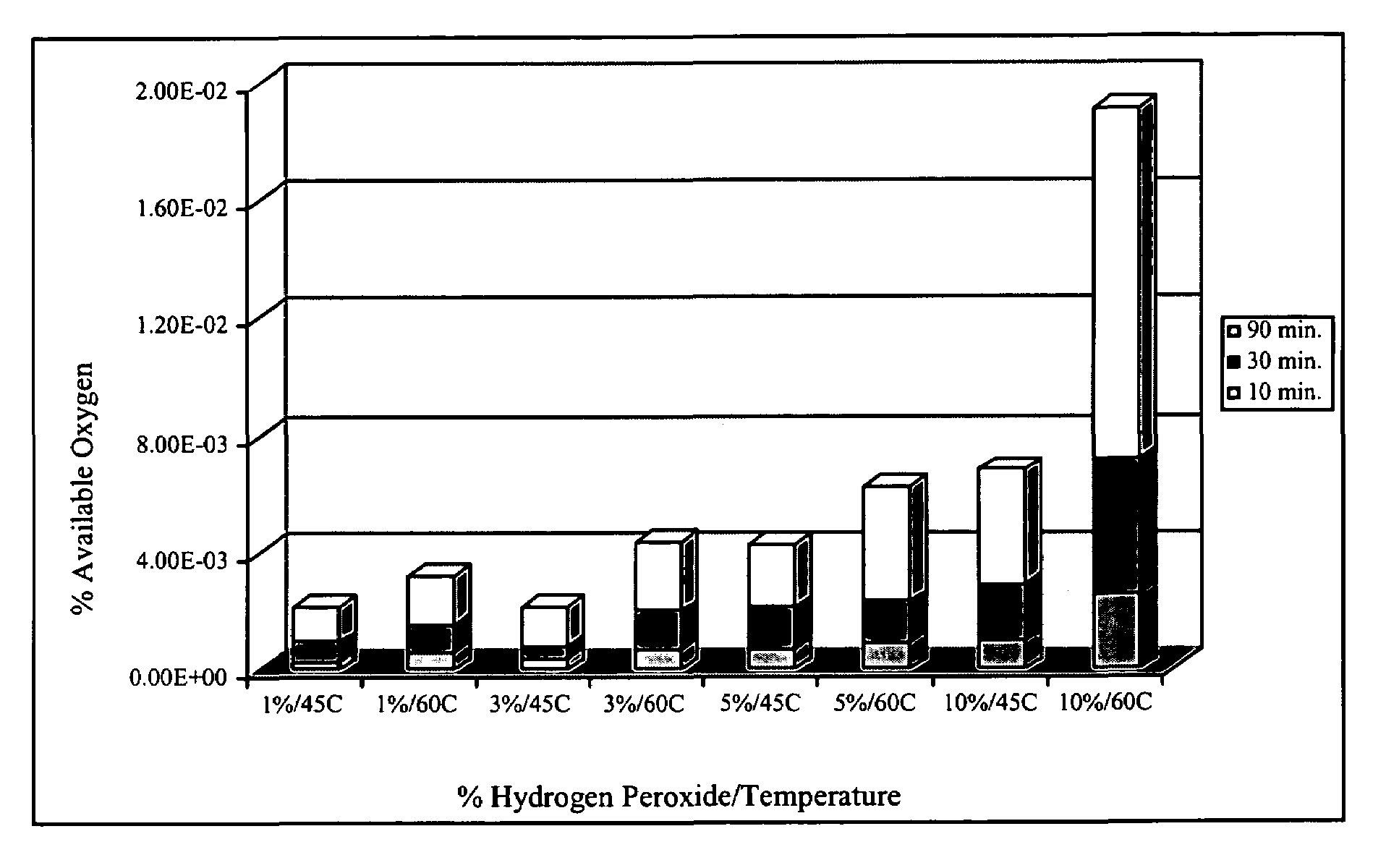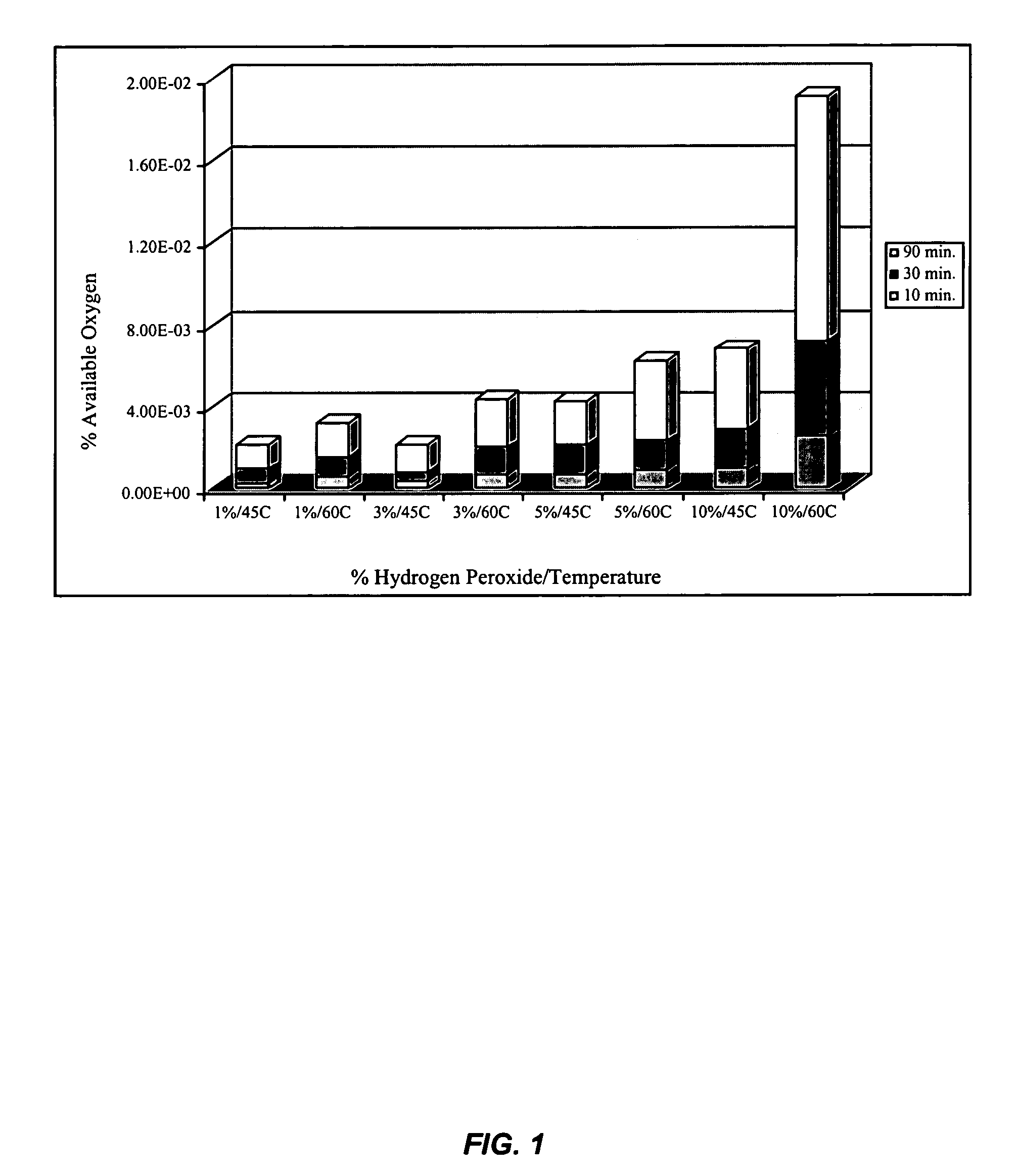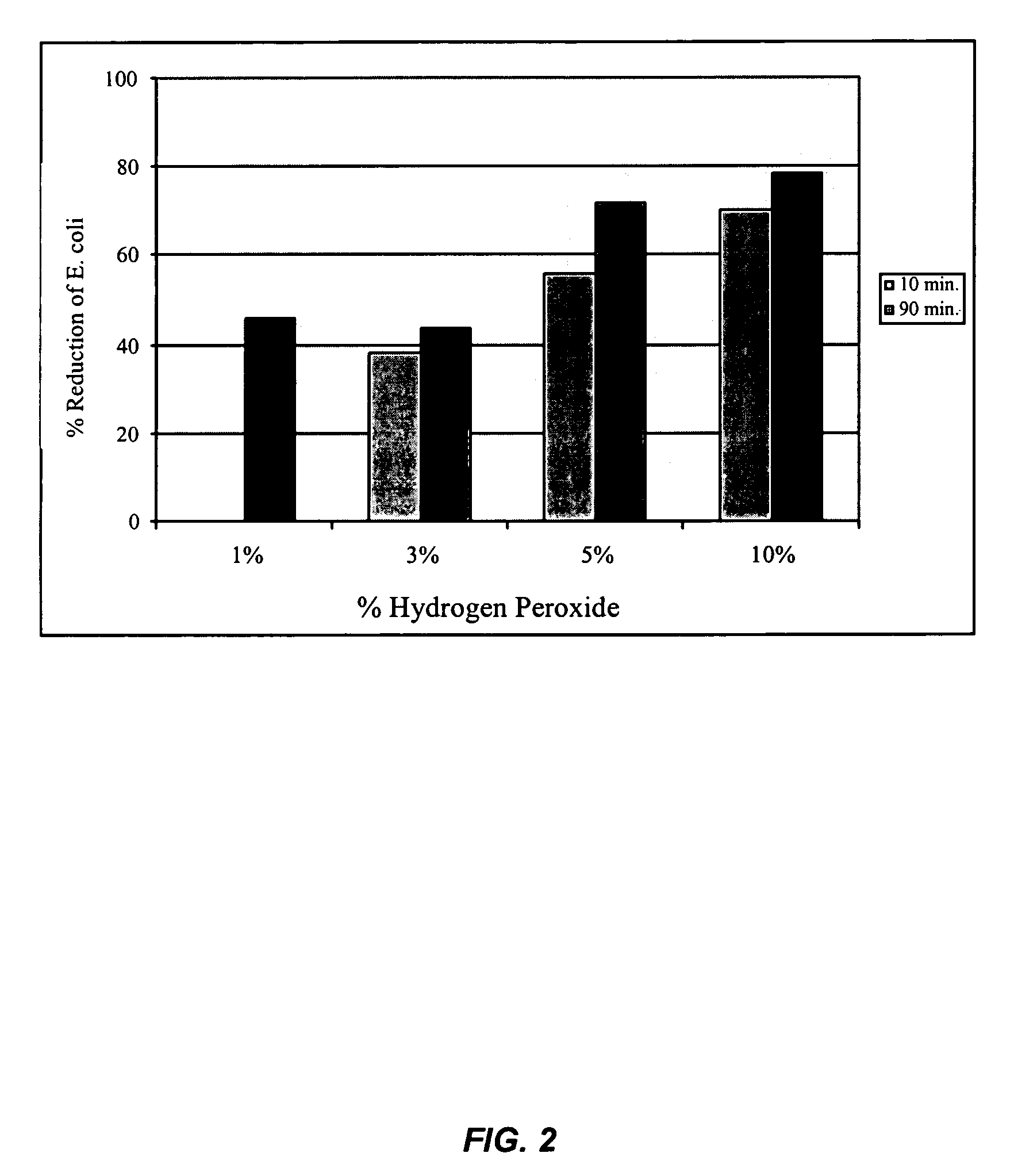Regenerable antimicrobial polymers and fibers with oxygen bleaches
a technology of antimicrobial polymers and fibers, which is applied in the direction of detergent compositions, chemistry apparatus and processes, and textiles and paper, etc., can solve the problems of non-regenerable antibacterial functions, easy washed away chemical agents, and inapplicability of n-halamine chemistry to colorized fabrics, etc., to achieve a broad spectrum of biocidal activity and be ready to be prepared
- Summary
- Abstract
- Description
- Claims
- Application Information
AI Technical Summary
Benefits of technology
Problems solved by technology
Method used
Image
Examples
example 1
Formation of Peroxide Moieties on Cellulose Under Acidic Condition: Hydrogen Peroxide as a Bleaching Agent
[0080]This Example illustrates the amount of peroxyacid moieties (a peroxy carboxylic acid functional group) on a modified fiber via chemical titration as well as observation of biocidal activities.
1. Materials
[0081]Cotton fabrics were selected in this study. These fabrics were bleached, desized cotton print cloth (#400) purchased from Testfabrics, Inc., West Pittston, Pa. 1,2,3,4-butanetetracarboxylic acid (BTCA), hydrogen peroxide (30%), sulfuric acid and all other reagents were purchased from Fisher Scientific, Pittsburgh, Pa. or VWR Scientific, South Plainfield, N.J.
2. Methods
[0082]Cotton fabrics were treated in a regular wet finishing process, i.e. pad-dry-cure method, with a two-dip-two-nip process with a concentration of 6% BTCA. Wet pick-up average to 118%. The treated fabrics were dried at 80° C. for 5 min. and cured at 175° C. for 1.5 min. After which, the fabrics were...
example 2
Formation of Peroxide Moieties on Cellulose under Basic Condition: Sodium Perborate as a Bleaching Agent
1. Materials
[0102]Cotton fabrics were selected in this study. These fabrics were bleached, desized cotton print cloth (#400) purchased from Testfabrics, Inc., West Pittston, Pa. 1,2,3,4-butanetetracarboxylic acid (BTCA), sodium perborate tetrahydrate, NaBO3.4H2O (FIG. 5) and sodium silicate (SS, 27%) were purchased from Aldrich Chemical Company, Milwaukee, Wis. All other reagents were purchased from Fisher Scientific, Pittsburgh, Pa. or VWR Scientific, South Plainfield, N.J.
2. Methods
[0103]Cotton fabrics were treated in a regular wet finishing process, i.e. pad-dry-cure method, with a two-dip-two-nip process at a concentration of 6% BTCA. Wet pick-up average to 125%. The treated fabrics were dried at 80° C. for 5 min. and cured at 175° C. for 1.5 min. After which, the fabrics were machine-washed at 50° C. for 30 min. The fabrics were then air-dried at the standard condition of 21°...
PUM
| Property | Measurement | Unit |
|---|---|---|
| temperature | aaaaa | aaaaa |
| temperature | aaaaa | aaaaa |
| temperature | aaaaa | aaaaa |
Abstract
Description
Claims
Application Information
 Login to View More
Login to View More - R&D
- Intellectual Property
- Life Sciences
- Materials
- Tech Scout
- Unparalleled Data Quality
- Higher Quality Content
- 60% Fewer Hallucinations
Browse by: Latest US Patents, China's latest patents, Technical Efficacy Thesaurus, Application Domain, Technology Topic, Popular Technical Reports.
© 2025 PatSnap. All rights reserved.Legal|Privacy policy|Modern Slavery Act Transparency Statement|Sitemap|About US| Contact US: help@patsnap.com



